From Flight Pioneers to Sky Giants with an 88.4-meter wingspan: The Evolution of Air Freight Transportation
Approximately 60.3 million metric tons were transported worldwide in 2022. Since its modest beginnings, air freight transportation has evolved significantly and is now an essential part of international trade and logistics. Over time, notable progress has been made in the realm of air freight shipping and air freight services. Let’s examine the development of air freight transportation, highlighting significant historical moments, modern discoveries, and current market trends. Join us as we explore the amazing journey of how air freight transportation has revolutionized international cargo transit.
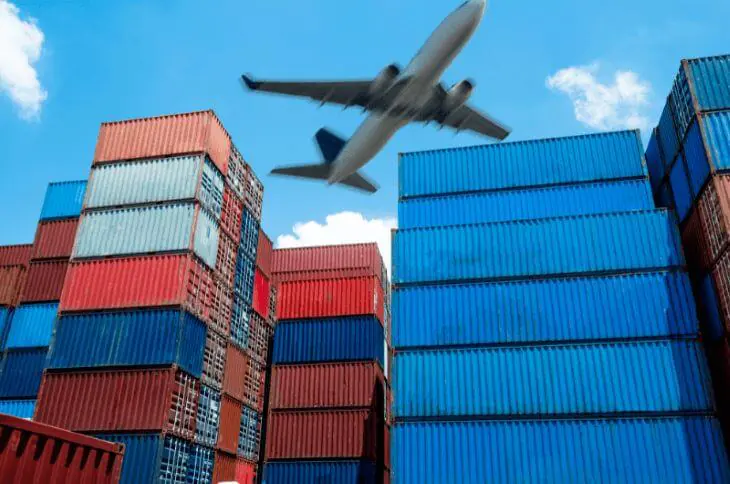
Source: www.canva.com
History and Historical Milestones
For more than a century, the history of air cargo transportation is one of invention and advancement. This voyage spans the years from the Wright brothers’ groundbreaking days to the present era of enormous cargo planes. It demonstrates the human desire to conquer the skies and transform the way products are moved.
The Origin of Air Travel
Aviation began when the Wright brothers created the Wright Flyer in 1903, the first powered aircraft. The biplane’s engine produced 12 horsepower and its wingspan measured 12.3 meters. Orville Wright piloted the Flyer during a historic 12-second flight on December 17, 1903, at Kitty Hawk, North Carolina, traveling 36.5 meters in the air.
Yet at this point, their accomplishment was limited to manned flight and the concept of air freight shipping had not yet been developed. To turn the skies into a conduit for the transportation of products, more advancements and the creation of cargo-specific aircraft would be required.
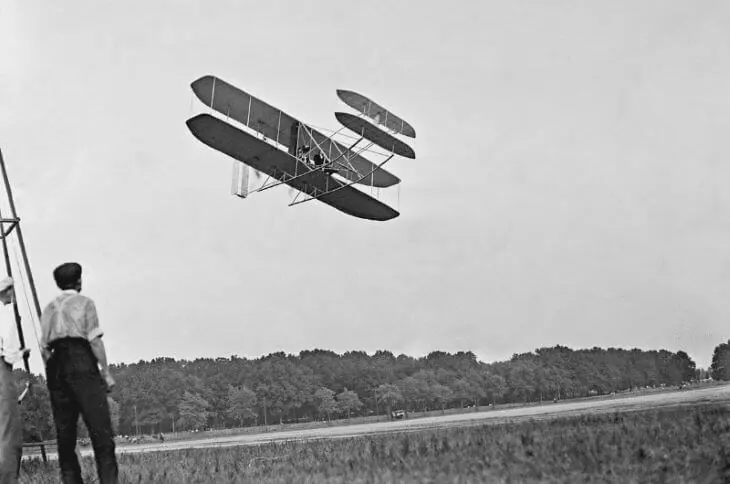
Source: www.canva.com
First Cargo Plane
More than a century ago, a U.S. department shop made the bold choice to send 91 kilograms of silk from Dayton to Columbus (105 km distance) in 1910. This marked the beginning of history for air freight shipments. This moment in the evaluation of air freight shipping had the famous Wright Brothers’ Model B plane competing against an express train in a time trial to see which could deliver the silk faster. The successful and trouble-free flight of the Model B plane in less than an hour gave strong proof to the world that air freight may eventually become a competitive and efficient mode of transportation.
Fun Fact: With a voyage time of just 57 minutes, the first-ever cargo-only air freight shipment created a new world speed record. It also solidified air freight‘s position as the go-to method for quickly transporting items from point A to point B.
The First Flight Across the Atlantic
The Fokker T-2 completed its first transatlantic journey in 1920 and carried significant goods between New York and Amsterdam. It was the first cargo aircraft to fly from the United States to Europe. This incredible achievement represented a paradigm shift in global logistics as well as an important aviation milestone. By removing barriers of distance and time, the Fokker T-2’s triumphant flight showcased the enormous potential of air cargo transportation to unite continents and speed up the growth of global trade.

Source: www.canva.com
Air cargo growth during World War II
The Second World War was a major factor in the development and acceleration of air cargo transportation. Military cargo aircraft, like the C-47 and C-54, were the unsung heroes of the war effort. These planes provided the troops on far-off fronts with supplies and moved important supplies quickly to keep the war machine running. These planes launched in a new age of international logistics and trade by demonstrating the strategic importance of air travel. These planes also laid the groundwork for the growth of commercial air freight services after the war.
Air Freight Services
The commercialization of air freight services transformed the cargo transport sector in the middle of the 20th century. Airlines saw the potential to move cargo quickly and built cargo-only aircraft to particularly serve this market.
Jet Engines
With the development of jet engines in the 1950s, freight planes were able to travel far faster and more efficiently than ever before. The ability to cover considerably greater distances in much quicker times with jet-powered aircraft, this innovation substantially shortened transit times.
Compared to the older propeller-driven aircraft, which are noticeably slower and have a shorter range, this was a significant contrast. In addition to making air travel more affordable, jet engines were essential to the growth of just-in-time supply chains and the globalization of trade—two things that were difficult to do with the slower, more outdated technology.
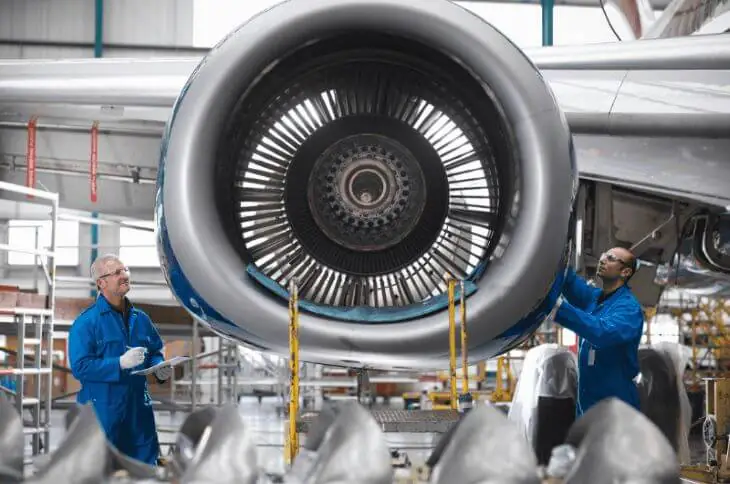
Source: www.canva.com
The use of containers
The loading and unloading of cargo planes were made easier and more economical in the 1960s with the introduction of standard cargo containers. Additionally, containerization made it easier for freight to be seamlessly transferred across land, sea, and air transportation.
Tip: Using sophisticated load planning software has become crucial for those facing difficulties with container handling and guaranteeing seamless operations as well as maximizing the effectiveness of cargo transit. To further expedite the process, think about utilizing specialized software like EasyCargo which will help speed up the process of loading containers for sea and land transport.
The “express” parcel boom
It was not until the 1990s that the idea of cargo planes intended exclusively for the transportation of freight gained significant traction. The growth of express package services like FedEx, DHL, and UPS as well as the expanding power of the internet were the main causes of this momentum. Together, these elements changed the face of cargo transportation by making air freight a far more reliable and accessible choice for importers and exporters.
The volume of air travel has increased tenfold in the last forty years and air freight has grown by a factor of fourteen. Over the same period of time, the world economies have tripled or quadrupled. Air transport has been one of the economic sectors with the greatest rate of growth (iata.org, 2011).
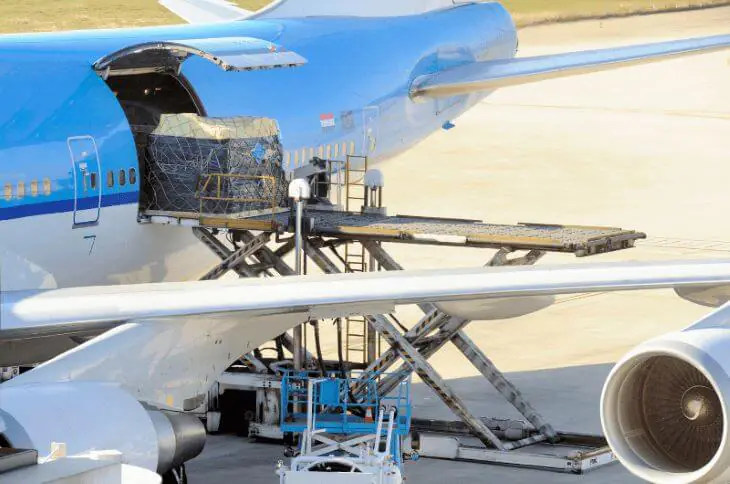
Source: www.canva.com
New Trends in Air Freight Shipping
What are the recent developments in air freight shipping revolutionizing the industry and incorporating advanced technologies?
E-commerce and Air cargo
As of 2022, the size of the global e-commerce market was $16.6 trillion USD (which, including an additional 2 trillion, is roughly equivalent to the gross domestic product (GDP) of China). According to IMARC Group’s projections, the market will grow to $70.9 trillion USD by 2028. The need for air cargo transportation has increased as a result of the growth of e-commerce. To fulfill customers’ expectations for prompt and dependable deliveries, online retailers mostly depend on air freight services. Today, cargo aircraft play a vital role in the supply chain for online retailers. Did you know that the cost of air freight shipping is at its lowest point in the previous three years? Forwarders and carriers do not anticipate a major improvement in market conditions until 2024’s second half (Xeneta.com, Wenwen Zhang, 2023).
Sustainable Air Freight Shipping
With environmental issues gaining prominence, the air freight sector is dedicating more resources to sustainability rather than biofuels and fuel efficiency. To further lessen their influence on the environment, airlines and cargo carriers are investing in innovative technologies and operational approaches.
The industry’s efforts to lower carbon emissions and lessen its environmental impact include projects like the creation of electric or hybrid cargo aircraft, the use of alternative energy sources at airports, and the use of lighter, more fuel-efficient materials in aircraft construction (without hesitation, it is not at the expense of safety). This all-encompassing approach to sustainability helps create a cleaner and more responsible air cargo industry while also being in line with international environmental goals.
Digitalization and Automation
Significant efficiency gains in air freight operations are being driven by digitalization and automation. Modern tracking systems improve security and dependability by offering real-time monitoring and insights. While autonomous ground handling equipment accelerates freight loading and unloading, artificial intelligence optimizes routes and cargo placement. How can AI optimize the route? It can do it by analyzing real-time weather data and forecasts, analyzing air traffic data to identify congestion, delays, and potential conflict, or utilizing historical data and predictive analytics.
The air cargo business is being driven by technical improvements to become more efficient and adaptive to satisfy the changing needs of global logistics. Discover more about these mind-blowing technologies. The industry’s efforts to lower carbon emissions and lessen its environmental impact include projects like the creation of electric or hybrid cargo aircraft, the use of alternative energy sources at airports, and the use of lighter, more fuel-efficient materials in aircraft construction (without hesitation, it is not at the expense of safety). This all-encompassing approach to sustainability helps create a cleaner and more responsible air cargo industry while also being in line with international environmental goals.
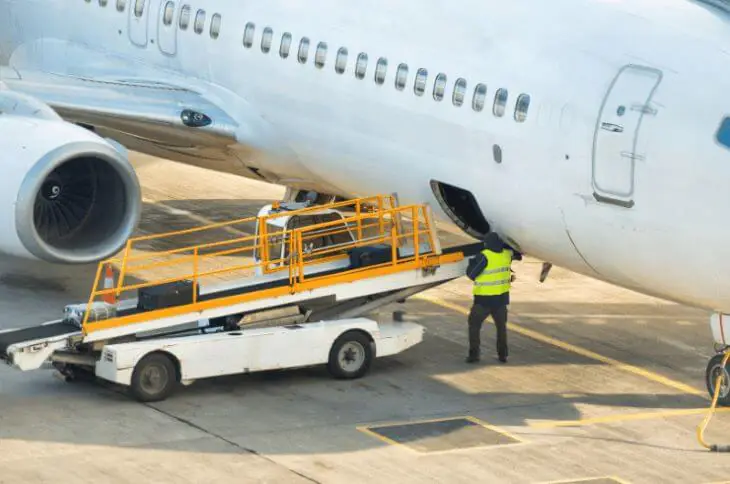
Source: www.canva.com
Pros and Cons of Air Freight Shipping
Depending on the particular requirements and conditions of shippers and organizations, air freight transit has several benefits and drawbacks. The following are the main benefits of air freight transport:
1. Speed
Since air freight travels at faster speeds than land travel, it is the best option for delivering goods on short notice or expediting the shipment of time-sensitive items such as medical supplies, fresh produce, seafood, and others. In contrast to other forms of transportation, which require longer transit times, it may travel large distances in a matter of hours or days.
The average transit time from New York to London for air freight is around one day, on the other hand, the same route for ocean freight is generally longer, ranging from 7 to 10 days.
2. Tracking in real time
With real-time tracking, any deviations or modifications to the shipment’s status can be immediately recognized. This makes it possible to react and make decisions quickly in the event of delays, interruptions, or other unforeseen circumstances.
3. Global Reach
Air cargo services facilitate enterprises’ effective access to global markets by connecting cities and countries across the globe. For businesses that have suppliers located throughout the globe or a global consumer base, this extensive connectivity is quite helpful.
4. Reduced Packaging
Compared to other forms of transportation, air freight shipping frequently requires less packaging since it encounters fewer handling points and a lower danger of damage. Because less material is used, there may be financial savings and a smaller environmental effect as a result.
5. Security
Airports are highly controlled environments with restricted access and have strict security protocols in place, so there is less chance of cargo damage or theft. Improved cargo security is one of the best things about air freight, especially for delicate or high-value items.
Similarly to other types of freight transport, alongside its benefits, air freight comes with a variety of disadvantages.
What are the main drawbacks of air cargo?
1. Cost
Generally speaking, air freight is more expensive than other forms of transportation because of its high fuel and operating expenses. There is a significant cost difference between ocean and air freight.
For example, the cost of shipping a medium-sized box weighing 900 kg from Shenzhen, China to Los Angeles, USA, via ocean freight can be as little as $1,500 USD. The cost of transporting the same box via air freight can be as much as $8,000 USD or more (freightos.com, 2021).
It’s important to remember that supply chain disruptions may cause pricing changes, which could reduce this cost difference. Examples include disruptions caused by natural disasters, geopolitical crises, or other unanticipated conditions. Furthermore, delays and higher ocean freight costs may be a result of a major port being temporarily closed because of a hurricane.
2. Limited Capacity
Certain types of cargo are less suited for air freight because cargo aircraft have limited room for large or bulky products. Large, heavy, or irregularly shaped commodities are less accommodated by air cargo compared to marine freight or land transit. Another limitation could be for goods that are sensitive to temperature changes, such as certain pharmaceutical products.
There are other specific types of goods that are restricted or prohibited for air freight, for example: Some live animals and materials that are classified as hazardous (explosives, flammable liquids, gases, and toxic substances or radioactive materials).
3. Environmental impact
There are much higher emissions from air freight shipping than from other types of transportation. For instance, 2 tons transported 5,000 kilometers (which is approximately the distance by car between Madrid and Batumi) by ocean will produce 150 kg of CO2 emissions. 6,605 kg of CO2 emissions will be produced by air, according to UK government data (freightos.com, 2021). Compared to marine or rail transportation, air travel is less sustainable due to its impact on the environment.
4. Delays
Even though air freight is generally dependable, delivery times may be affected by delays brought on by bad weather, strikes, or other circumstances. For example, in 2022, 14,443 flights in Canada were delayed due to bad weather conditions, which is 7.3% of all flights worldwide (CBC News, 2023). Particularly for local shipments, land or sea transportation may occasionally provide more predictable lead times.
Solving Problems by Air
When it comes to meeting urgent needs, air travel is a flexible and effective way to solve a wide range of transportation-related problems.

Source: www.canva.com
Humanitarian Aid – Haiti (2010)
Humanitarian aid was delivered in large part thanks to air freight after Haiti’s terrible 2010 earthquake. To assist in meeting the immediate needs of earthquake survivors, cargo planes and relief flights sent medical supplies, rescue teams, and essential supplies to the afflicted districts.

Source: www.canva.com
Disaster Relief – Typhoon Haiyan (2013)
Typhoon Haiyan, one of the strongest tropical cyclones ever recorded, hit the Philippines in 2013. Aviation travel was essential to disaster relief efforts. Critical supplies including food, water, and emergency supplies were transported to the damaged areas by cargo aircraft, including military transport aircraft. This helped to expedite aid to the afflicted populations and aid in the entire recovery process.

Source: www.canva.com
Medical Supply Delivery – COVID-19 Pandemic
The COVID-19 epidemic brought attention to how important air freight is for the delivery of medical supplies. The global response to the pandemic and prompt access to life-saving resources have been made possible by cargo planes. Cargo planes played a crucial role in transporting vital medical supplies, personal protective equipment, vaccines, and important drugs to nations across the globe.
Three B.I.G. of air freight
Let’s dive into the three “biggest” of air freight.

Source: www.canva.com
The biggest cargo plane in the sky
The largest container ships in our oceans are well known to you, but what is the largest cargo plane in the sky? The world’s largest cargo aircraft, the Antonov An-225 Mriya, was created and built in Ukraine.
It is an aeronautical marvel, with a massive 88.4-meter wingspan, six turbofan engines, and a maximum takeoff weight of 250 tons. Its enormous cargo hold, which is roughly 43 meters long, 6.4 meters wide, and 4.4 meters high, allows it to carry extraordinarily large and heavy loads, shattering multiple world records in the process.
The An-225 was initially designed to carry the Soviet space shuttle Buran, but it has since found use in a variety of industries. This includes the transportation of crucial cargo, huge industrial machines, and humanitarian goods across international borders.
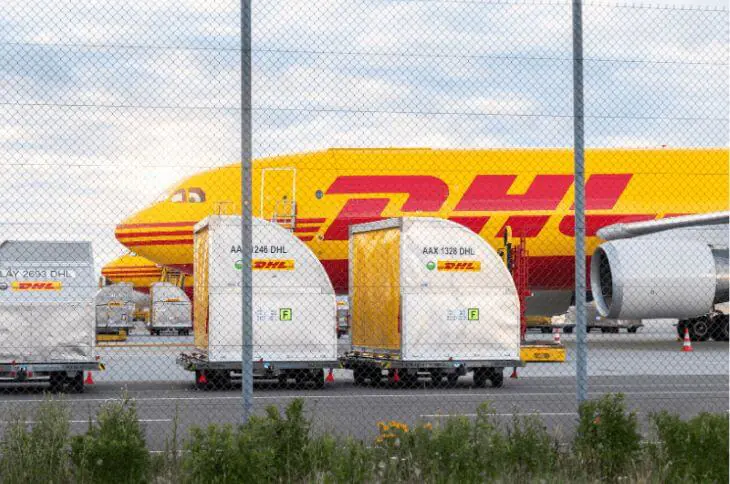
Source: www.canva.com
The biggest air freight business
The largest air freight business is DHL Aviation. DHL Aviation is a division of the massive German logistics company Deutsche Post DHL Group. With an impressive $20 billion in revenue annually, it stands out in the air freight industry. DHL Aviation is a global force in the aviation business, providing air cargo services to a vast network covering 220 countries and territories with a fleet of 250 aircraft.
Its wide range of cargo includes vital medications, auto components, and state-of-the-art electronics. This is especially fascinating. This highlights its adaptability and importance in the worldwide supply chain. By strategically placing its hubs and sorting facilities across the globe, DHL Aviation can further improve its capabilities as well as guarantee the smooth movement of goods on a worldwide basis.
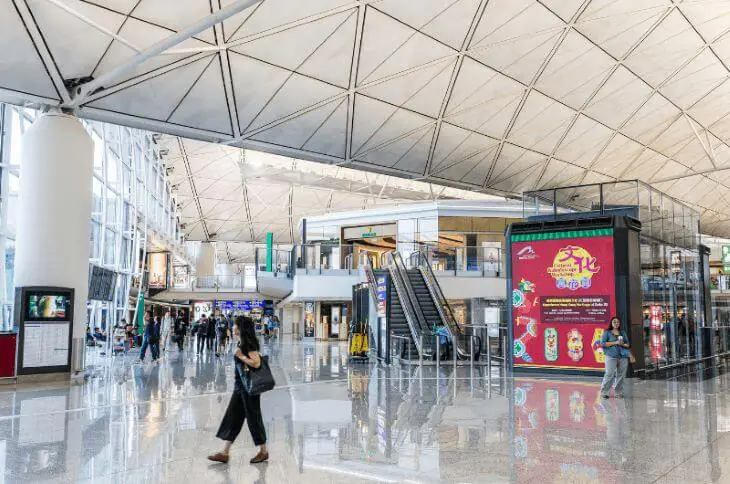
Source: www.canva.com
The biggest freight airport in the world
Hong Kong International Airport (HKG) is the biggest freight airport in the world and is extremely important to the air cargo sector. It should come as no surprise to you that China is home to the largest cargo airport if you have read our article about the biggest marine ports.
It demonstrated its unparalleled size and efficiency in 2022 by carrying about half a million more freight loads than its nearest rival, Memphis International Airport. However, the weight of the cargo was only 4.2 million tons compared to Memphis International Airport, where it was almost 4.7 million tons of cargo.
HKG is a key hub in international trade and logistics because of its strategic location at the center of the Asia-Pacific region. It is the main entry point for companies and individuals looking to carry goods to and from Asia. The airport plays a vital role in facilitating the movement of commodities throughout the world and linking enterprises, as evidenced by its remarkable performance as well as continual growth.




